The trade war between the United States and China began today with both sides saying they are determined to protect their countries’ interests. It can be difficult for investors to drown out the noise of this major economic event, but we have an advantage …
What do our Stock State Indicator (SSI) signals and time-cycle forecasts tell us about the trade war?
The signals indicate that the Chinese stock market has been performing poorly for a long time. The Shanghai Stock Exchange Composite Index (SSE Index) contains all the stocks that trade on the Shanghai Exchange. The SSE Index has been in the TradeStops Stock State Indicator (SSI) Red Zone for more than three years, well before President Trump came into office and rattled the trade war sabers.
The SSE Index topped out more than three years ago above the 5,000 level, then dropped dramatically and triggered an SSI Stop signal shortly thereafter.

Though the SSE Index was trending higher for two years after the sharp selloff in 2015, it never triggered a new SSI Entry signal. Our volume-at-price chart shows that the SSE Index could drop below 2,500 before hitting the next support level.
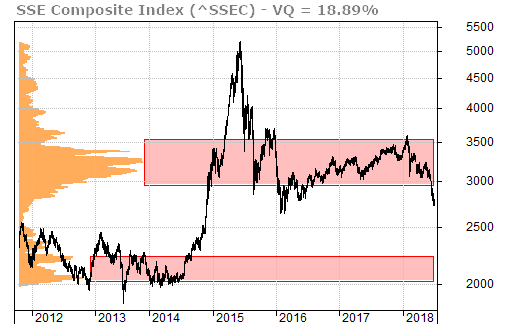
Our proprietary time-cycle forecast shows that the downtrend is likely to continue through the end of 2018 and into the first quarter of 2019.
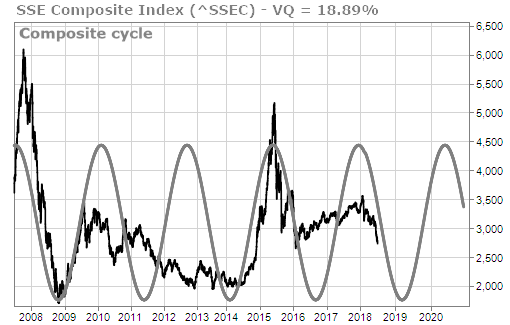
U.S. investors trade the iShares China Large-Cap ETF (FXI). This ETF includes 50 of the largest companies in China. FXI had held up better than the SSE Index, but just last week, it moved into the SSI Red Zone after triggering its SSI Stop signal.
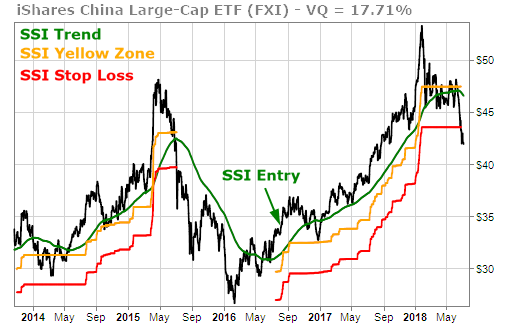
The uncertainty of the trade wars has affected Europe as well. The SPDR Euro Stoxx 50 ETF (FEZ) represents 50 of the largest companies across 19 European countries. FEZ came within 27 cents of hitting its SSI Stop signal last week and remains in the SSI Yellow Zone.
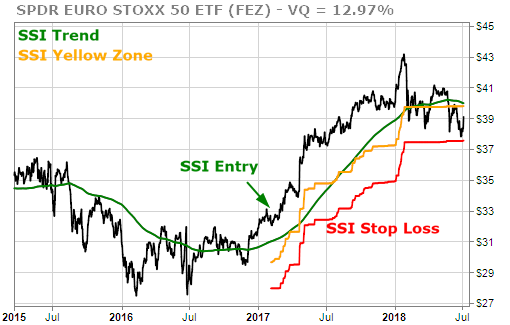
Three months ago, we told you that the markets were taking the threat of the trade war very seriously. The S&P 500 remains in the SSI Red Zone and is trading mostly flat since the end of January. Since publishing this editorial, the S&P 500 is up by about 2.8%.
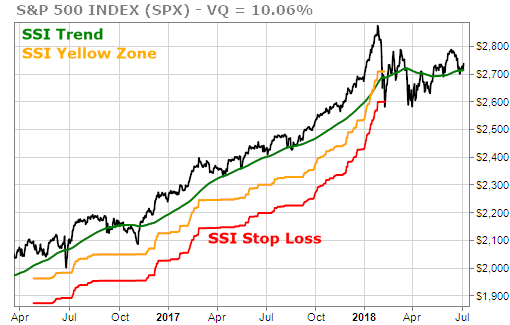
On the other hand, we also suggested three months ago that it would make sense to look at the small-cap stocks. The businesses of these stocks tend to be more domestically-oriented and likely won’t be affected by the trade war noise.
Since then, the S&P 600 Small Cap Index remains solidly in the SSI Green Zone and has moved dramatically higher. In just three months, the S&P 600 is up by 11.46%.

We’re now heading into earnings season and the large multi-national companies could begin issuing warnings that their businesses will be affected by the trade wars. This is just more noise to distract you into making bad decisions. Don’t fall for it.
Concentrate on the signals and be sure your stops and alerts are in place — they are your discipline in difficult markets.





